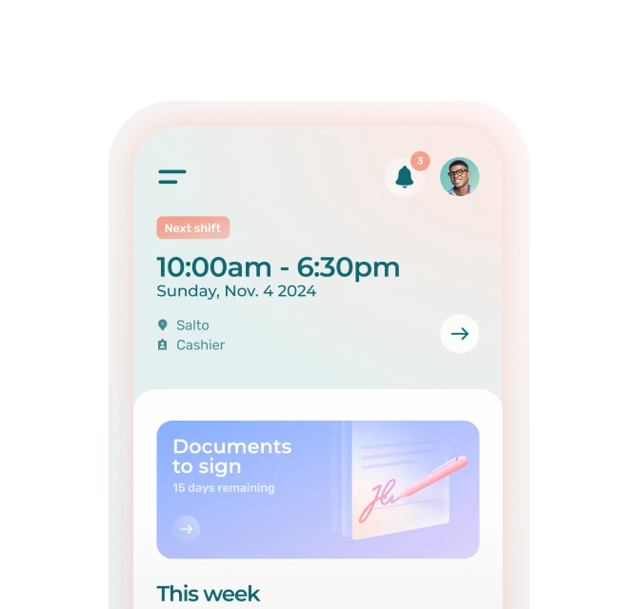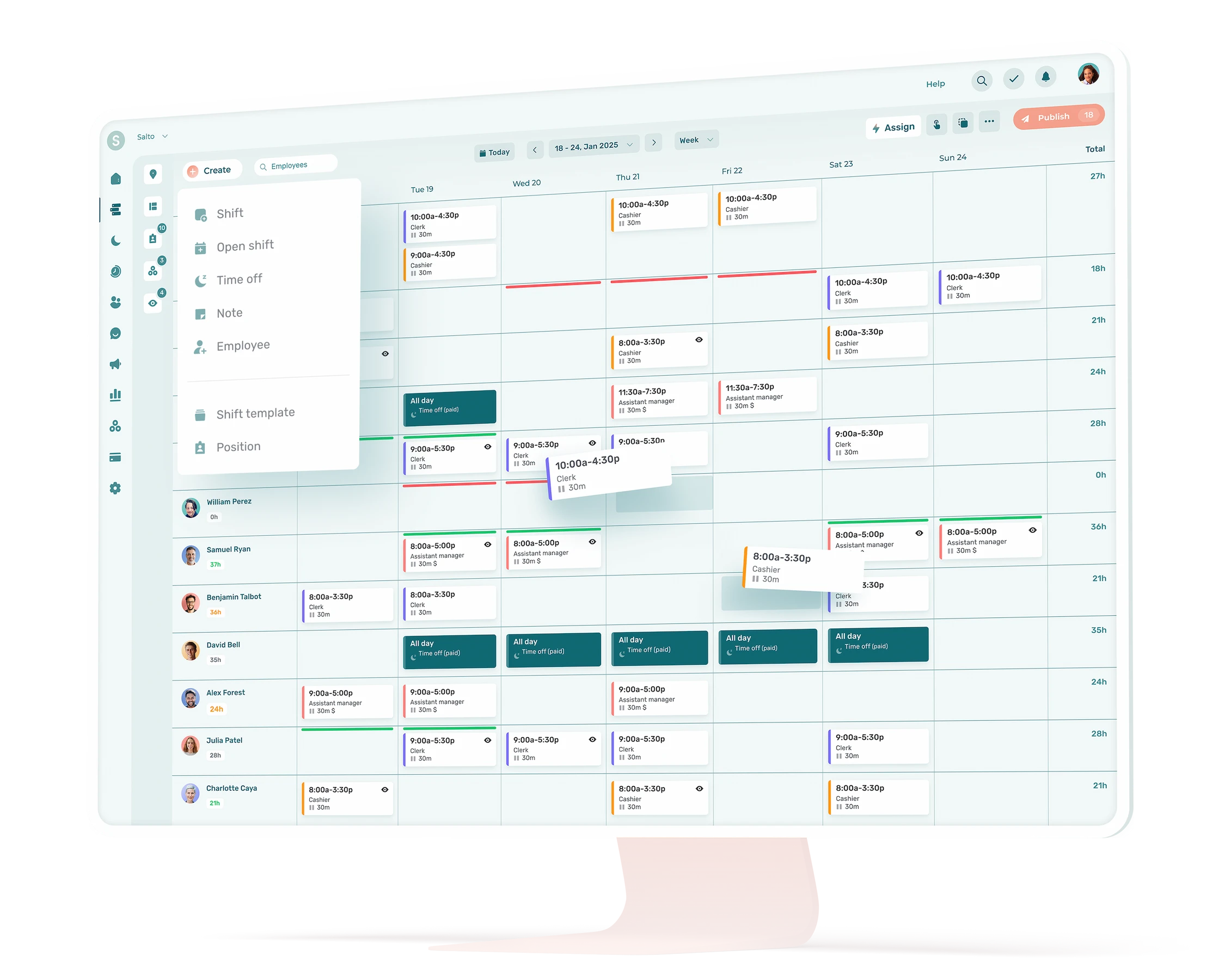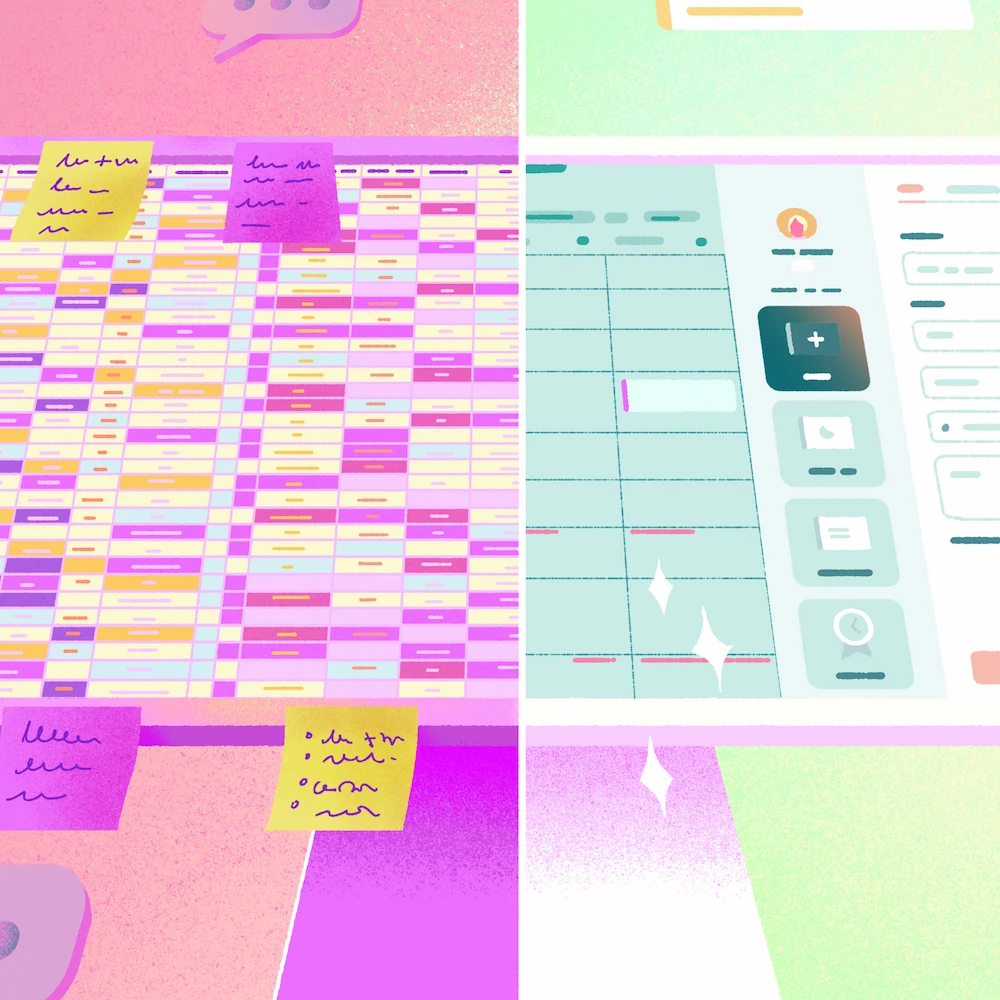Running a nursing home in Canada always comes with staffing challenges. There’s no magic wand to make your staffing problems disappear overnight, but the right nurse scheduling software can be the next best thing.
Use our handy guide to identify which key features to look for in assisted living scheduling software and how to select the best scheduling solution for your seniors’ residence.
Importance of Optimizing Efficiency in Nursing Home Staffing
Agendrix has many customers in the assisted living industry, and we know that resident well-being is the top priority for every nursing home manager.
But did you know that optimizing staffing efficiency can improve resident care, lower operational costs and prevent employee burnout?
Using Agendrix has positively changed everything to do with scheduling and payroll, for both managers and employees.
Before jumping into how to choose the best scheduling software for your nursing home, we think it’s important to first look at the main tasks nursing home managers face, along with the types of software systems commonly used in seniors’ residences.
Key Functions in Nursing Home Operations
Managers of assisted living residences wear many hats – from resident care to staffing. Ensuring staff are well-trained and assigning shifts based on care plans, all while creating balanced schedules and complying with government relations and labor laws can be a time-consuming juggling act.
Software Systems Commonly Used in Nursing Homes
These days, most managers of assisted living facilities rely on a variety of software management tools. Examples include:
- Scheduling software, used to align shifts with staffing regulations
- Payroll and time-tracking tools, used to streamline pay calculations and monitor attendance
- HR software, used to manage employee onboarding, benefits, and certifications
These and other software solutions allow managers to streamline operations, freeing them to spend more time on resident care and less time on mundane administrative tasks.
How to Choose the Best Nursing Home Employee Scheduling Software
Below are industry best practices for choosing a software solution, including nursing home employee scheduling software. By following these steps, you’ll be sure to choose the right software tool.
1. Assess Needs and Requirements
- Identify key features your nursing home requires, such as real-time scheduling updates, compliance tracking, and mobile accessibility for staff.
- Consider your facility’s specific needs (e.g., shift rotations, overnight care) and ensure the software can accommodate them.
2. Research Available Options
- Conduct research on employee scheduling software tailored to nursing homes.
- Look for solutions that specialize in healthcare or long-term care environments.
- Evaluate vendors based on their understanding of healthcare regulations and nursing home operations.
3. Evaluate Features and Functionality
- Prioritize features like automated shift assignment, overtime management, and real-time notifications.
- Consider if the software offers an employee self-service portal and multiple ways to clock to reduce your administrative workload.
- Evaluate how well the senior care scheduling software integrates with your existing management systems (e.g., HR, payroll, resident care management).
4. Ensure Compliance Support
- Make sure the software helps you comply with staffing regulations, such as provincial requirements for staff-to-resident ratios and documentation of employee credentials.
- Ensure it includes automated alerts to avoid non-compliance penalties.
5. Request Demos and Trials
- Test out shortlisted software through free trials or product demos to evaluate ease of use and functionality.
- Involve key stakeholders (e.g., nursing staff, administrative teams) in the trial to ensure the software meets their needs.
6. Assess Support and Training
- Evaluate the level of customer support provided by the software vendor, including response times and the availability of training resources.
- Ensure that the vendor offers ongoing support and updates to keep your software running smoothly.
7. Compare Pricing and ROI
- Understand the pricing structure and total cost of ownership, including initial setup fees and recurring costs.
- Assess the potential return on investment in terms of time savings, improved compliance, and reduced administrative workload.
Benefits of Nurse & Caregiver Scheduling Software for Long-Term Care Facilities
Managers of assisted living facilities sometimes worry that implementing a new software will wreak havoc on daily operations. But if you follow the steps listed above, disruptions will be minimal and short-lived.
In fact, you can instead expect to see the following gains almost immediately when adopting scheduling software.
1. Improved Staffing Efficiency
- Automated scheduling; shifts will be assigned based on employee availability.
- Schedules optimized according to resident care needs, with much less risk of understaffing or overstaffing.
2. Better Compliance and Documentation
- Agendrix Plus plan features to track employee certifications and licenses, helping you to avoid compliance issues related to unqualified staff.
- Accurate records for audits and inspections.
3. Enhanced Communication
- Centralized communication directly in the nurse scheduling software; staff will receive updates, shift changes, and important announcements in real-time.
- Fewer chances of miscommunication, especially for shift changes and last-minute updates.
4. Reduced Administrative Burden
- Streamlined administrative tasks like scheduling, time-off requests, and shift swaps, freeing you to spend more time on more critical tasks.
- Automated reporting to provide you with insights into staffing levels, overtime, and labour costs.
5. Increased Employee Satisfaction
- Employees will have more control over their schedules by being able to request time off and swap shifts easily.
- Integrated surveys so that you can gather valuable employee feedback, which you can use to improve staff’s work-life balance, boost morale and reduce turnover.
6. Accurate Payroll Integration
- Seamless integration with payroll systems to ensure the accurate tracking of hours, overtime, and time-off, resulting in fewer payroll errors.
- Significant time savings by eliminating manual entry and reconciliation.
7. Scalability
- As your nursing home grows, that employee scheduling software will scale with your needs, accommodating additional staff, shifts, and locations.
Let Agendrix assisted living scheduling software help you optimize staffing and patient care
Choose the right nurse scheduling software for your seniors’ home, and you’ll see improved operations, compliance, and resident care. Agendrix scheduling software will automate all those repetitive, time-consuming tasks like shift scheduling, employee management, and compliance tracking, allowing you to focus on making your assisted living facility the best that it can be.
How Can Nursing Homes Ensure Compliance with Staffing Regulations?
Using assisted living scheduling software can help you meet staffing ratio requirements. These systems can alert you when staffing falls below regulatory standards, ensuring shifts are always covered with the appropriate number of qualified employees.
What Are the Common Staffing Challenges in Nursing Homes?
Nursing homes often face challenges such as:
- Labour shortages and high staff turnover due to demanding work conditions.
- Ensuring adequate shift coverage during peak hours or emergencies.
- Managing employee fatigue and burnout due to understaffing or overtime.
- Coordinating time-off requests, vacations, and shift swaps while maintaining compliance with care standards.
- Frequent overtime for employees.
How Can Employee Scheduling Software Improve Staffing in Nursing Homes?
Nurse and caregiver scheduling software for long-term care facilities automates shift assignments, ensuring adequate coverage based on resident needs. It also streamlines communication with staff, tracks availability, and manages time-off requests, reducing the risk of understaffing or scheduling conflicts.
By optimizing schedules, it can reduce employee burnout and improve job satisfaction.
How Can Nursing Homes Reduce Staff Turnover?
To reduce turnover, nursing homes can:
- Offer flexible work hours and accommodate employee availability through shift-swapping features.
- Use scheduling software to balance workloads and prevent burnout.
- Provide career development opportunities and adequate onboarding and training.
- Foster a supportive work environment with open communication and recognition like high fives for hard work.
How Can Employee Scheduling Software Help with Overtime Management?
Scheduling software tracks employee hours and automatically flags you when staff are nearing overtime, allowing you to adjust schedules to reduce extra costs. It can also ensure shifts are assigned fairly and that staff are not overworked, which helps you control overtime and maintain a healthy work-life balance for employees.
How Does Scheduling Software Improve Employee Satisfaction in Nursing Homes?
By offering employees the ability to view their schedules in real time, request time off, and swap shifts, scheduling software provide greater flexibility and control over their work-life balance. Transparent communication and fair scheduling practices can lead to higher job satisfaction and retention rates.
Can Employee Scheduling Software Help Manage Part-time and Full-time Staff?
Yes, most scheduling software systems like Agendrix allow for seamless management of both part-time and full-time employees, ensuring that shifts are distributed according to availability, contract hours, and labour laws.
What Is the Impact of Understaffing in Nursing Homes?
Understaffing can lead to increased stress and burnout for existing staff, reduced quality of care for residents, and potential non-compliance with regulations. Agendrix scheduling software helps prevent understaffing by optimizing shift assignments and alerting managers when additional staff are needed.
How Can Nursing Homes Manage Last-minute Shift Changes or Absences?
Employee scheduling software often includes features for managing last-minute changes, such as shift-swapping, availability tracking, and automated alerts. These features enable nursing homes to quickly fill shifts when employees call in sick or request time off, ensuring continuous care for residents.













